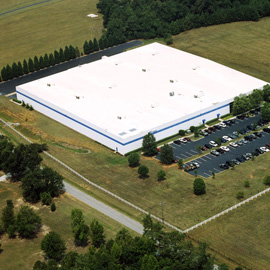The Bubble and Foam Basics

The Bubble and Foam Basics
Bubble films and foam packaging have long been considered some of the most effective types ofprotective packagingon the market. They are lightweight, durable, and offer premium protection to all kinds of products, especially those that are fragile or susceptible to scratches, scuffs,anddings.Understanding these packaging materials can help you in many ways. With complete knowledge of the bubble and foam basics, youll be able toleverage these versatile void fills to the best of their capabilities, which allows you togive exceptional security to all of your goods.What is BubbleWrap?
Bubblewrap, which is sometimes called bubblepackagingor bubble film,is a type of void fill that is sold by the bundle.Youll likely recognize bubble packaging pretty quickly as the fun sheets of plastic with small bubbles that make a satisfying pop noise when you burst them. Not only are they an entertaining distraction, but these durablebubble packaging sheets are a convenient void fill and cushioning method that offer outstanding product protection.The actual bubbles on each sheet will vary in size, but are most often available in heights of 3/16, 5/16, and ".Different colors have different meanings, with clear bubble packaging being the standard, green bubble wrap representing recycled material, and pink bubble filmsignifying the anti-static properties in the material.
What are Foam Sheets?
Foam sheets, alternately referred to as foam packagingor foam rolls, come in many different styles, including foam bags, foam pouches, foam loosefills, andmicrofoam.Most often, foam rolls are sold in bundles that come in various dimensions. The standard width of a foam roll is 72, while youll often find it available in thicknesses of 1/32, 1/16, 3/32, 1/8, ", and ".No matter which size is best suited to your application, foam packaging will give your items excellent security against scratches and scrapes while in transit, as well as a premium cushion to soften any bumps or vibrationsthat may occur.SlitandPerforated Bubble and Foam Packaging
When purchasing these types of protective packaging, its common to receive your rolls slit orperfed, which is just one important aspect of the bubble and foam basics.A slit means that the bubble sheets or foam rolls are sideways cut, while perforationmarksare vertical.Perfedrolls are easier to tear and do not require any assistance from scissors or knives.Common Applications for Protective Packaging
One of the most essential bubble and foam basics is understanding just what exactly these products are designed to do.There is one primary purpose for these types of packaging materials, and that is to provide protection to your items while theyre in transit or storage. However, there are numerous factors that go into that safeguarding, which well break down right here:
Void Fill:Bubble and foam packaging can take up space inside of a box in order to stop your products from shifting and tumbling during transit or handling.
Cushioning:Bubble wrap and foam sheets are able to absorb the shocks and vibrations that come along with distribution processes, minimizing the impact on your products.
Blocking and Bracing:When placed insidesecondary packaging materials, bubble film and foam sheets are able to restrict an items unwanted movement that can often result in damage.
Surface Protection:Sheets of foam or bubble wrap help to prevent scratches or abrasions fromoccurringon delicate or fragile surfaces.
Containment:If your products need some extra support or padding, bubble or foam packaging are great options to wrap your goods with an extra cushion.
Going Beyond the Bubble and Foam Basics
Are you ready to digdeeper into bubble and foam or get started using them to protect your products? Good news we're here to help!Head over to our contact pageor give us a call today at 1-888-704-9189 to learn more!Read Related Articles
Get A Free Quote / Need Help ?
Contact Us



